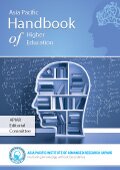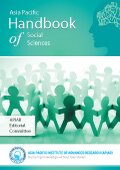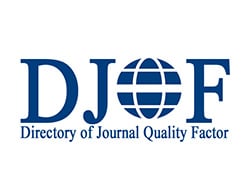
Editor in chief

Prof. Iain Densten
Australia.
Following the success of the first volume of the Asia-Pacific Handbook of Contemporary Research, we are now ready to welcome high-quality, thought-provoking contributions for the next volume. This second volume aims to present similar discussions related to topics on Business, Social Sciences, Education, and ICT that are not only relevant to the Asian and Pacific regions but also to the rest of the world. The second volume offers the unique opportunity to create debates on topics and alternative approaches that are sometimes forgotten or merely overlooked, but offer potential solutions to the limitations in current thinking and methods of investigations. We aim for this volume to provide a platform where contributors can raise concerns and showcase their new ideas. I am inviting you to submit your book chapter and make your own contribution to the handbook.
Handbook Publication
The ‘Asia-Pacific Handbook of Contemporary Research’ is a comprehensive collection of thought-provoking discussions within the subject areas of Business, Social Sciences, Education, and ICT. Centred on information gathered in the Asian-Pacific region as well in the rest of world, the handbook sets out to offer alternative and challenging ideas both to academics and practioners.
The purpose of the Handbook is to stimulate further discussions on the various research methods used in each of the four subjects mentioned above, giving insights into relevant theories that may have been overlooked. The Handbook presents the studies separately, each containing its own argument, research and conclusion. While the issues raised may not be fully answered, the Handbook instead raises the profile of the theories to open up discussions and encourage further studies based on the research presented.
Rather than offering a flowing narrative to connect the studies, the Handbook combines these studies to reinforce the idea that current research methods are lacking, and that newer theories should be considered to address current concerns.
Call for Book Chapters
After the great success of the Asia-Pacific Handbook of Contemporary Research, volume 1, which was published in 2017, APIAR is again welcoming authors from both academia and industry to submit their book chapters to be reviewed for the second edition of the handbook. Any topic related to Business, Social Sciences, ICT or Education can be considered for a book chapter.
This handbook will help to define the standards for these topics and to promote understanding. Not only academics but also professionals will benefit from the contents of the handbook, which will inform and inspire readers to reach their full potential.
Please ensure that all manuscripts meet the following criteria:
- word count of 5,000–7,500 words for each chapter
- submitted as Microsoft® Word document
- typewritten in English
- use an objective third-person viewpoint throughout (e.g. “the author/s” or “the researcher/s”, NOT “I” or “we”)
More information can be found from the link ‘Instructions for Authors’.
Tentative schedule for publication
Submission of book chapters by: 28th February 2019
Early-bird registration deadline: 8th March 2019
Anticipated publication: April 2019
Why Publish with Us
Asia Pacific Institute of Advanced Research (APIAR) is always looking for new authors and for manuscripts in various fields of interest. We can publish your chapter or book. Our experienced and enthusiastic staff will guide you through the publishing process and help to make your chapter or book an international success.
Why publish with us?
- We are a small and devoted team with a personal approach to every project.
- We offer in-house expertise for editing, design and marketing.
- We publish to the highest standards within a short time span.
- We provide worldwide shipping and distribution of your books.
- We make your work accessible to a global audience through ‘Your Choice for Open Access’ for both journal articles and books.
- We distribute your e-books are on multiple global platforms.
Each publication is very valuable to us and we are open to your ideas on how you would like to publish your book. If you would like to know more about the publishing options we offer, please send us an email: [email protected]
Publishing Process
We know how challenging it can be to develop and compile quality research for a book or chapter for publication. Collaborating with contributors and an exhaustive review process are only two of several hurdles. APIAR is here to support your efforts. Experienced editors will work with you at every stage to guarantee that the finished product represents your hard work and dedication.
Acquisitions
Our acquisitions editors help you form solid plans for new books or chapters by examining publication platforms, topic coverage, and concept organisation. To be considered for publication, we ask you to submit a proposal form outlining the details of your idea. We take great pride in our top-quality original content, and your proposal will undergo several assessments to determine suitability, marketability and interest. For more information, contact [email protected] .
Development
If your proposal is accepted, and following your agreement through a formal contract, our development team will help you to refine and enhance your manuscript. By providing key resources and advice, we ensure that formatting standards and project deadlines are met. We also maintain a suite of development resources on our website designed to simplify collaboration between you and your contributors. These resources act as a centralised reference point that allows authors and editors to stay on track. For more information about how our development team can assist you, contact [email protected] .
Production
After we receive your final manuscript submission, our production team will begin the process of creating your bound and printed book or journal. Unlike most academic publishers, we handle all our production operations in-house. By keeping everything under one roof, we gain greater control over the quality of our product and can ensure that your research is error-free and it hits the market quickly.
Marketing
With a blended, direct-marketing strategy, our marketing team will give your research the maximum exposure to our wide and growing global audience. Your publication will be announced to our booksellers and wholesalers worldwide, including our list of electronic content vendors. By the time your manuscript goes to print, it will have featured in various newsletters, catalogues, and listservs. We're also happy to provide promotional material to help contributors showcase their work at conferences and expos. For questions regarding our marketing process, contact [email protected] .
Editorial Board
Future projects
The Asia Pacific Institute of Advanced Research (APIAR) is an Australian-based organisation dedicated to empowering the research sector. APIAR delivers experience and expertise across four primary domains: Business, Social Sciences, Education and ICT. In response to evolving learning processes and knowledge consumption needs, APIAR collates the resources of leading professionals worldwide into a single platform of global knowledge.
In order to disseminate the knowledge in the areas of business, social sciences, education and ICT, APIAR has now decided to publish four handbooks. These handbooks will further focus on four specific areas, as discussed below. APIAR believes that academics as well as practitioners will benefit from these books.
More specifically, the handbooks will serve as teaching tools for academics, providing guidelines for different situations. Practitioners, for example, can learn the right ways of handling stakeholders. The books will allow APIAR to show the business world how expectations can help to flourish these areas. Everyone, including management, will be on the same team and be able to understand both what is expected of them and what they should expect from others. APIAR anticipates your cooperation in this regard.
 Asia Pacific Handbook of Contemporary Business Practices
Asia Pacific Handbook of Contemporary Business Practices
 Asia Pacific Handbook of Higher Education
Asia Pacific Handbook of Higher Education
 Asia Pacific Handbook of Social Sciences
Asia Pacific Handbook of Social Sciences
 Asia Pacific Handbook of Sustainable ICT
Asia Pacific Handbook of Sustainable ICT
Instructions for Authors
Please follow the guidelines below as you write a manuscript for submission. Any manuscripts not meeting these specifications will be returned to the author(s) for correction, which can cause significant delays in the publication of your work.
Please ensure that all manuscripts meet the following criteria:
- word count of 5,000–7,500 words for each chapter
- submitted as Microsoft® Word document
- typewritten in English
- use objective third person point of view throughout ("the author/s" or "the researcher/s" NOT "I" or "we")
- Originality of manuscripts. Only ORIGINAL submissions will be accepted for publication. Manuscripts most not have been previously published or submitted for publication elsewhere.
- Simultaneous submissions. No manuscript may be submitted to two publishers for publication at the same time.
- Revised manuscripts. APIAR Australia will not publish a manuscript that is a “revised” version of one previously published elsewhere. In order to be considered original, a manuscript must contain at least 80 percent new material with no more than 200 consecutive words (properly cited) repeated verbatim from any previously published work.
- Copyright. Please note that PDF copyright agreements are accepted in APIAR Australia's publication process. As part of the manuscript submission process, you and your authors will be asked to sign the Author’s Warranty and Transfer of Copyright Agreement. Authors are fully responsible for obtaining permissions and clearing any copyright issues relating to the content of their work. Each submission will be reviewed by at least two anonymous editors with sufficient expertise in the relevant field.
- Plagiarism. APIAR takes plagiarism very seriously. All manuscripts are checked for plagiarised passages prior to being accepted for publication. Please ensure that all information taken from outside sources is properly cited and that all ideas are expressed in your own words.
-
Titles. Titles must not exceed 100 characters, and any subtitles must not exceed 50 characters.
- Note that all titles must appear in title case: the first letter of each word should be capitalised except for prepositions (position words such as “over”, “with” or “between”), conjunctions (connecting words such as “and” or “but”) or articles (“a”, “an” or “the”). The only exception to this rule is that the first word of the title or subtitle is always capitalised.
- Titles must be written in lower-case letters, not in all capital letters (i.e. "Chapter Title", not "CHAPTER TITLE").
- Headings. Appropriate headings and subheadings may be added to the main body of the text. Note that headings and subheadings should be numbered (e.g., 1. Introduction, 2. Background, etc. and any subheadings should be numbered 1.1, 1.2; 2.1, 2.2 etc.).
- Key terms and definitions (book chapters only). All book chapters must include a list of 7-10 key terms and definitions following the references and additional reading lists. Definitions must be written in the chapter author’s own words.
- Figures and images. A manuscript can include a maximum of 5 tables, figures or images. All figures must be submitted as separate files in .tif format. Please also note that the author is responsible for obtaining permission to use any figure or image that is currently under copyright by a third party. Please see the ‘Authors’ Resources’ section.
-
Harvard style referencing: Please ensure that all citations in your manuscript are substantiated with an in-text reference citation. A minimum of 10 sources is required for each submission. Please also note that your references must follow the Harvard referencing style. For more information and examples on the Harvard Style referencing system, please see the ‘Authors’ Guidelines’ section.
- Self-citation. Researchers may cite their previously published works where relevant while ensuring that self-citations do not exceed 20 percent of the references in the manuscript.
- LaTex. LaTex files are NOT accepted because they are not compatible with APIAR’s typesetting program.
- Equations. If a symbol or equation can be typed directly into Microsoft Word, please do so. Otherwise, we require the use of MathType for the formatting of equations. Authors can download a free trial version of MathType here: http://www.dessci.com/en/products/mathtype/.
- Copy editing and proofreading.Note: The Manuscript Organization and Formatting Template is designed for the purpose of standardising manuscript submissions and does not reflect how your work will actually appear in print. The final format and design is done at the sole discretion of the publisher.
- Peer reviews. All submissions must undergo a double-blind review process before being accepted for publication. Authors of book chapters will be requested (not mandatory) to serve as reviewers for 2–3 chapters. Authors have a vested interest in ensuring the quality of all chapters within the publication, as improving the quality of the publication as a whole will also improve the reception of their own work within it.
- There should ideally be only one author for one book chapter. For a full-book there can be one or many authors.
Please click on the following link to download the Chapter Template.
Any manuscripts failing to comply with the above criteria will be immediately returned to the authors for correction or, in some cases, may result in the rejection of the manuscript.
**Please note that all manuscripts MUST be submitted through the ‘Submission System’. Manuscripts submitted outside of the system will not be considered for publication.
Submit a Chapter
Submit a proposal
The core of the publishing process is the book proposal. Ideas for books are as varied as the books themselves. They arise in all sorts of different situations, but generally a book concept is written down into a proposal ‘form’. This form contains a summary of the book, its aims, its goals and main features. The form covers the market that the book is going to be written for, and also the existing books that form the central competition to the proposed one.
Copyright Documents
Copyrights are a type of personal property right that grants the copyright owner control over the use and transfer of the copyrighted work. Copyrights are important because they allow an author to create original works without the fear of later having it stolen by another author. Although registering your copyright typically makes it much easier to defend your copyrighted works, it is not necessary. The work is considered to be protected by copyright upon its creation. There are instances where an author may want to transfer some or all of his or her copyright to another person or entity.
A copyright owner's exclusive rights (either in whole or in part) can be transferred to another party, but it must be in writing and signed by the copyright owner to be considered valid. An authorized agent of the copyright owner (such as an attorney or business associate) can also sign the writing.
Become a Reviewer
Please let us know if you wish to be considered as a reviewer for a specific handbook. Reviewers evaluate chapters of a handbook, based on the specific requirements for that handbook, and on certain predefined criteria as well as check for quality, completeness and accuracy of the research presented. They are expected to provide feedback on the chapter and research, suggest improvements and make a recommendation to the editor about whether to accept, reject or request changes to the chapter.
Reviewing is a time-intensive process – writing a review report can be almost as much work as writing a manuscript! – but it is very worthwhile for the reviewer as well as for the community. Reviewers work to:
- ensure the rigorous standards of the scientific process are met by taking part in the reviewing system
- uphold the integrity of the handbook by identifying invalid research, and helping to maintain the quality of the handbook
- fulfil a sense of obligation to the community and their own area of research
- establish relationships with reputable colleagues and increase their opportunities to join one of our editorial boards
- reciprocate professional courtesies, as authors and reviewers often play interchangeable roles – as reviewer, researchers ‘repay’ the courtesy they receive as authors
The great benefits in becoming a reviewer include:
- establishing your expertise in the field, and expanding your knowledge
- enhancing your reputation and increasing your exposure to key figures in the field
- keeping up-to-date with the latest literature, and having advance access to research results
- developing the critical thinking skills essential to research
Advance in your career – reviewing is an essential role for researchers.
Payment
The main objective of APIAR is to disseminate the knowledge; however, APIAR is not is a position to bear inevitable expenses of publication. Any kind of publication with APIAR will incur you cost. Paid publication fee will be used to screen books / chapters for quality and marketability and then, to handle editing, manufacturing, marketing, promotion and sales. Publication will be done on the basis of ‘Print on Demand (POD)’ strategy. This will eliminate the cost of inventory and returns. Contributing authors of books / book chapters will receive a complimentary hardcopy version. Any kind royalty issue can be negotiated.
It is important to note that no registration fee will be refunded after it has been paid. If an author needs additional copies then minimum five copies should be ordered (plus postage). Textbook or chapter authors will enjoy the discount in this regard. Discounts can be given for the publication of multiple books or multiple chapters in different handbooks.
Sorry, Registration is closed now.













